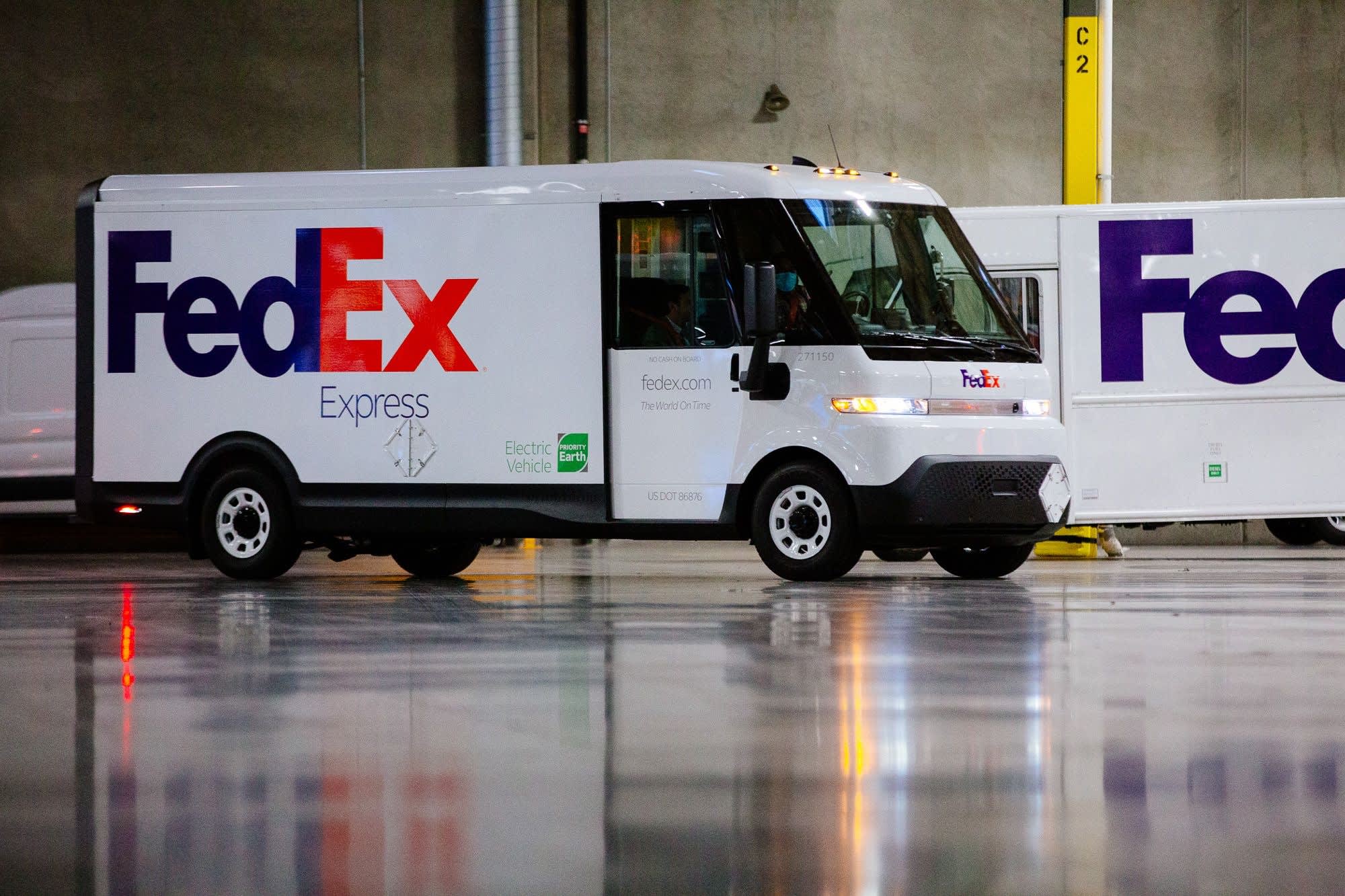FedEx gets first of 500 electric trucks from GM’s EV unit in a major advance for green logistics

FedEx on Friday received the first of 500 electric delivery trucks from BrightDrop, the newly formed EV unit of General Motors. It’s a moment both companies call a “tipping point” for EVs for package delivery and logistics.
“What we’re talking about here is transforming transportation,” FedEx Chief Sustainability Officer Mitch Jackson told CNBC. “We’ve been using electric vehicles in our operation for 10 years. They’ve been primarily start-ups, and you’ve had issues with the gap between development to commercialization.”
While only a small part of the FedEx fleet of 87,000 vehicles, the Brightdrop EV600 trucks represent a big commitment to sustainability for the global carrier as it aims to buy only electric delivery vehicles after 2025 and electrify its entire delivery fleet by 2040.
“We are now looking at the scalability of commercial electric vehicles. Why is that important for FedEx? We use a lot of vehicles in our operation, and we need a lot of vehicles in order to make a sizeable difference in our operations,” Jackson said. “We need that scale, and we need that production capability.”
The EV600s can travel 250 miles on maximum charge, and they can carry up to 2,200 pounds. FedEx said they will first be used in the Los Angeles area next year. California is considered one of the most demanding areas for residential delivery in the country, and it has the highest gas prices in the nation at nearly $4.67 per gallon of regular, according to AAA.
“We’ve designed these vehicles from the ground up to be delivery vehicles,” BrightDrop CEO Travis Katz told CNBC. “We spent hundreds of hours in the field with real couriers.” He said the aim is to make trucks that are more efficient and more comfortable to drive. “When you take a customer like FedEx that has massive global scale and you put those things together, it’s a really exciting moment for the entire industry.”
BrightDrop estimates the cost to charge an EV600 is approximately 75% less than fueling a gas-powered truck. FedEx said an electrified fleet would cut maintenance costs in half. The savings are a major factor in going green, and FedEx also hopes to get the attention of ESG investors.
“I think the message it sends is that sustainability is a core part of the business,” Jackson said. “It helps the businesses be more responsible, it meets our customers’ needs, it helps in our communities. And importantly, it’s a good play for the investment community as well.”
The competition in commercial EVs is growing. Newly public Rivian Automotive, backed by Ford and Amazon, has a partnership with the e-commerce giant, and it’s scheduled to deliver 100,000 EV delivery trucks by 2024. U.K.-based start-up Arrival has a deal in place to deliver 10,000 EVs to UPS by 2024. Oshkosh Defense, a unit of Oshkosh Corporation, will build 165,000 EVs for the U.S. Postal Service over the next decade.
“When you think about a company like FedEx, what they need is reliability,” Katz said. “They need to know that these vehicles are going to be on the road 365 days a year. They need to know that a company is going to be able to support them with parts and maintenance when things go wrong. We have that ability to scale in a way that none of the other competitors have.”
Wedbush analyst Dan Ives forecasts commercial EV spending will reach $1.2 trillion by 2030.
“FedEx is the golden goose in the commercial EV space as the stalwart is aggressively looking to convert towards EVs over the next decade. BrightDrop getting FedEx is a major shot in the arm of credibility as this logo will have a cascade impact getting other customers heading down the EV path. Commercial EV adoption and FedEx are interconnected over the coming years,” Ives told CNBC.




